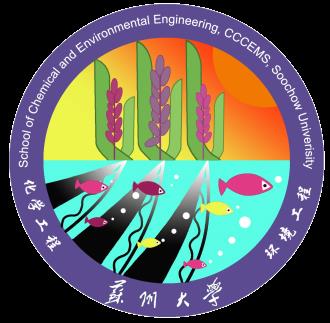
时间:5月23日,星期五,9:30——11:30
地点:907—1549
邀请专家:Karen Hapgood, Cordelia Selomulya, Meng Wai Woo
Pharmaceutical Manufacturing
Improving Particle Design and Processing
报告人简介:
Karen Hapgood is Professor and Head of Department of Chemical Engineering at Monash University, Australia. She spent five years in the US pharmaceutical industry before joining Monash, where she co-founded the Monash Advanced Particle Engineering Laboratory. Dr Hapgood's research interests are in granulation, agglomeration, and powder technology, focussing on applications primarily in the food, pharmaceutical, specialty chemicals and consumer products. She is the recipient of several awards including the AAPS New Investigator in Pharmaceutics and Pharmaceutical Technology award (2006), Uhde-Shedden Medal (2010) and an ADC Australian Leadership award (2011). She is an Associate Editor of Chemical Engineering Science and the Australasian Executive Editor for Advanced Powder Technology..
报告摘要:
The great majority of pharmaceutical products are manufactured from powders and the development of drug delivery formulations is now a multi-billion dollar business. The drug powder and several other excipients ingredients are combined into a final dosage form, and the final drug concentration must be within a very tight tolerance. Although the science of drug discovery is advancing rapidly, pharmaceutical manufacturing processes (called "recipes") have changed very little and are strikingly similar to cooking recipes. These are conservative approaches, based on trial and error, designed for robustness but not performance. This talk will look at several ways Monash Chemical Engineering is developing better particle science to contribute towards better pharmaceutical powder processes, by developing new dimensionless groups for particle coating and agglomeration, new tracer approaches to powder blending, and the design of "liquid marbles" which use hydrophobic powders to produced structured granules.
Functional particles: Assembly and Applications
报告人简介:
Cordelia is an active researcher in particle technology, focusing on materials synthesis such as controlled-release particles for pharmaceutical applications, the manufacturing of high-value dairy products in collaboration with the Australian dairy industry, and the applications of “smart” particles in therapeutics and vaccine delivery. Before joining Monash University, she was a Royal Academy of Engineering Anglo-Australia Postdoctoral Fellow at the Institute of Particle Science and Engineering, Leeds University, and a Research Fellow at the ARC Centre of Excellence for Functional Nanomaterials at the University of New South Wales. She won the Young Researcher Award from the Australian Academy of Technological Sciences and Engineering in 2003, and the Chemical Engineering Science Most Cited Article Award between 2003-2006. She was a fellow at the Japan East Asia Network (JENESYS) Programme for Future Business Counterparts from Australia (2009) and the Australia-China Young Researcher Exchange Program (2013). She was recently selected into the highly competitive Monash Research Accelerator program 2013-2014 for high performing researchers with potentials to be future leaders in their fields. Cordelia is currently serving as the president of the Australasian Particle Technology Society.
报告摘要:
The talk will provide an overview of past and current research projects at the Monash Advanced Particle Engineering Laboratory (MAPEL) and the Biotechnology and Food Engineering Group (BFE), with the view to welcome collaboration with the research group at Soochow University.
The research group at Monash University utilizes a microfluidic drying approach to synthesise uniform microparticles with tightly controlled characteristics and sizes in a scalable, almost waste-free process. The talk presents several examples of microparticles with tailor-made properties and functionalities such as encapsulation and controlled release kinetics. The synthesis route is applicable to other self-assembling systems, including mesoporous, crystalline, and hierarchically-structured microparticles. As spray drying is commonly used in food and pharmaceutical industry, the understanding (and possibly the synthesis route) could be used to produce powders with better functionality and ease of handling for advanced applications such as selective adsorption and bio-separation. Other research projects are in functional nanomaterials, including nanoparticle assemblies to deliver protein and DNA vaccines, and magnetic nanomaterials for hyperthermia treatment.
Making ultrafine uniform particles with ethanol vapour
报告人简介:
Wai is a Lecturer in the Department of Chemical Engineering in Monash University. He completed his PhD in Malaysia and was a research fellow in Monash prior to taking up his current position. His research area is on spray drying and computational fluid dynamics. In the area of spray drying, his focus is on producing particles with specific functions. His other research area is on computational fluid dynamics simulation of industrial processes.
报告摘要:
Conventional spray drying uses hot air to dehydrate moisture from atomized droplets. This process has been used to make milk powder and other food and pharmaceutical powder products. Typically, each droplet dehydrates into single particles. We have developed a new drying technique which can produced hundreds of particles within each atomized droplets. This can potentially mean that more uniform and fine droplets can be produced via spray drying without the need to employ very fine atomization. The technique employs ethanol vapour instead of just hot air and induces the precipitation mechanism within the droplet. Experiments with sugars and starches show that very uniform and fine spherical particles can be produced. Employing the technique to proteins even produced sub-micron particles. Preliminary experiments were undertaken on the technique to produce ultrafine microencapsulates.